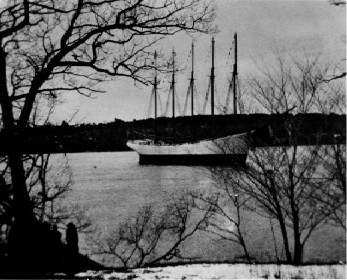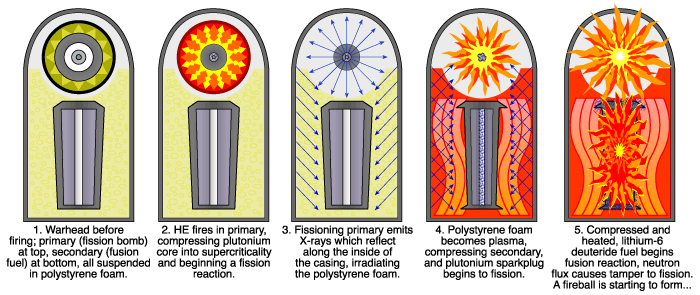Or not
January 31, 1921 -
John G. Agar, American's greatest B movie actor, first husband of Shirley Temple
 and owner of the world's largest King Kong Statue (I kid you not), was born on this day.
and owner of the world's largest King Kong Statue (I kid you not), was born on this day.Sometimes, it's just a red letter day.
January 31, 1957 -
It's not to be believed but on a double bill, Attack of the Crab People and Not of this Earth premiered on this date.
Oh Roger Corman, we love you!
Today in History: January 31, 1921 -
The Carroll A. Deering was a five-masted commercial schooner that was found run aground off Cape Hatteras, North Carolina, on this date. Its crew was mysteriously missing.
Theories abound about the the crews disappearance ranging from piracy, mutiny and victims of the dread 'Bermuda Triangle'.
 The truth is out there.
The truth is out there.January 31, 1940 -
The first monthly retirement check was issued to Ida May Fuller of Ludlow, Vermont, in the amount of $22.54. Miss Fuller, a Legal Secretary, retired in November 1939. She started collecting benefits in January 1940 at age 65 and lived to be 100 years old, dying in 1975.
Ida May Fuller worked for three years under the Social Security program. The accumulated taxes on her salary during those three years were a total of $24.75. Her initial monthly check was $22.54. During her lifetime she collected a total of $22,888.92 in Social Security benefits.
January 31, 1945 -
Private Eddie Slovik is the first U.S. soldier to be shot for desertion since the Civil War.
Although over 21,000 American soldiers were given varying sentences for desertion during World War II, including 49 death sentences, Slovik's was the only death sentence carried out.
January 31, 1950 -
Coming off yet another three day bender, President Truman gives the go-ahead for the development of Edward Teller's hydrogen bomb.
 Hopefully, no one in the Axis of Evil is reading my blog
Hopefully, no one in the Axis of Evil is reading my blogExplorer-I, officially Satellite 1958 Alpha (and sometimes referred to as Explorer 1), was the first Earth satellite of the United States, having been launched at 10:48 pm EST on January 31, 1958, as part of the United States program for the International Geophysical Year.
The satellite was launched from LC-26 at Cape Canaveral Air Force Station in Florida onboard a Juno I rocket.
Electrical power was provided by mercury chemical batteries that made up approximately 40 percent of the payload weight. These provided power that operated the high power transmitter for 31 days and the low-power transmitter for 105 days. (This is on the test.)
January 31, 1961 -
The United States sends its first space monkey into space, Ham the chimpanzee. His Mercury/Redstone 2 achieves an altitude of 158 miles. Ham's capsule splashed down in the Atlantic Ocean and was recovered by a rescue ship later that day.
After the flight, Ham lived for 17 years in the National Zoo in Washington D.C., then at the North Carolina Zoo before dying at the age of 27 on January 19, 1983. Ham appeared repeatedly on television, as well as on film with Evel Knievel.
Truly, a great way to honor this space pioneer - appear with Evel Knievel.
January 31, 1966 -
The Soviet Union launches the unmanned Luna 9 spacecraft as part of the Luna program. Three days later, on February 3, 1966 the Luna 9 spacecraft was the first spacecraft to achieve a lunar soft landing and to transmit photographic data to Earth.
 For unknown reasons, the pictures from Luna 9 were not released immediately by the Soviet authorities.
For unknown reasons, the pictures from Luna 9 were not released immediately by the Soviet authorities.Now the truth can be told.
And so it goes.
No comments:
Post a Comment